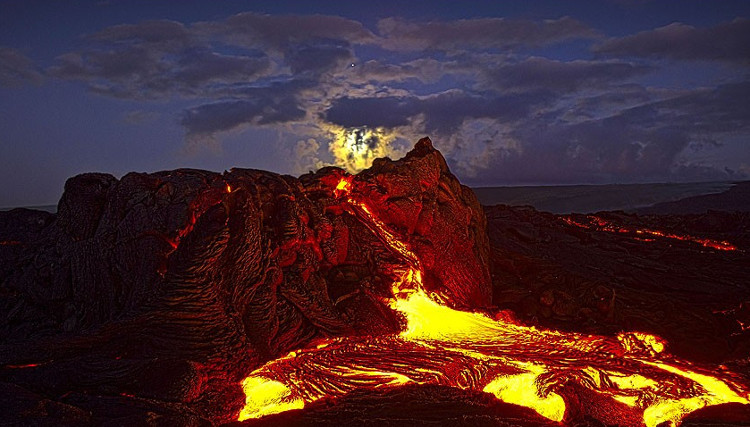What is lava?
The term lava was first used by Francesco Serao when writing about Vesuvius' magma eruption from May 14 to June 4, 1737. Serao described a striped lava flow like water and mud after heavy rains .
What is lava?
"Lava" is a molten rock that erupts from a volcano during the eruption. When erupting from volcanoes, it is liquid at a temperature of about 700 ° C to 1,200 ° C (1,300 ° F to 2,200 ° F). Although, lava is quite viscous, about 100,000 times higher than water, it can flow over a long distance before it cools into stone, due to its thixotropic characteristics and shear thinning.
Lava flow is the flow of lava, created during the peaceful eruption process. When the flow stops, lava solidifies into a rock that erupts.

The composition of lava will determine its properties rather than the temperature at which it erupts.
What are the ingredients in lava types?
In general, the composition of lava will determine its properties rather than the temperature at which it erupts. Magical stones formed from lava can be classified into three groups based on chemical composition: felsic, intermediate, and mafic.
Felsic lava such as ryolite and special dacite form from lava spine, lava dome or "coulees" (are thick and short lava) and are associated with debris deposits. Most felsic lava flows have a very high viscosity, and especially debris as they erupt, creating blocky lumps.
Intermediate lava and andesite have less aluminum and silica and are often high in magnesium and iron. Intermediate lava forms the andesite and lava arches, often forming steps of mixed volcanoes like the Andes.
Mafic lava or basalt lava is characterized by high levels of iron, and magnesium, and temperature when erupting is usually above 950 ° C. Basalt has high iron and magnesium and aluminum and silica are relatively low, they reduce the degree of polymerization in the molten state.
Super-mafic lava such as komatiite has a high content of magma forming a carboninite with an extremely high eruption temperature. Komatiit contains more than 18% magnesium oxide, and the temperature when erupting is about 1,600 ° C.
- Process of collecting molten lava from volcanoes
- Video: What happens when lava meets ice?
- Detected many strange lava columns on Mars
- Why does lava melt in the Earth's heart without causing the Earth's crust to melt?
- Monitor lava flow with 3D technology
- Decipher the mystery who runs on molten lava
- The lava lamp is 50 years old
- Explore volcanic lava lakes that are 1,000 degrees Celsius hot
- Huge lava lake on Kilauea volcano
- The 20-meter-high lava tower is red in the sea
- Lava swallowed people's homes in Hawaii
- Close up of intense eruption of lava lake
 'Fine laughs' - Scary and painful torture in ancient times
'Fine laughs' - Scary and painful torture in ancient times The sequence of numbers 142857 of the Egyptian pyramids is known as the strangest number in the world - Why?
The sequence of numbers 142857 of the Egyptian pyramids is known as the strangest number in the world - Why? History of the iron
History of the iron What is alum?
What is alum?